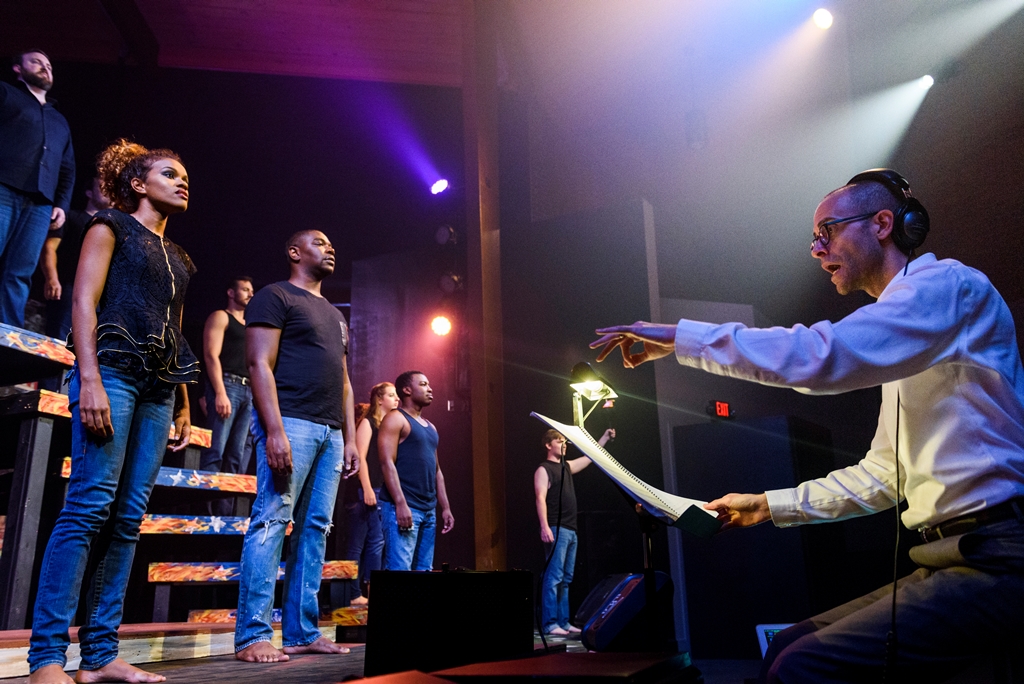Five days before the war ends, UA’s campus is obliterated. A trio of scholars set out to tell the old story in a new way.
By Jamon Smith
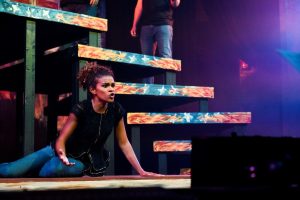
The year was 1865, and the American Civil War was five days from ending.
But five days wasn’t soon enough.
On the morning of April 4, Union troops marched on The University of Alabama – a Confederate military school at the time – and obliterated it by fire.
Everything was destroyed except four buildings: Maxwell Hall observatory, a guardhouse, the 1829 Gorgas House and the President’s Mansion.
As Union troops began torching the mansion, Louisa Frances Garland, the wife of then-UA president Landon Garland, stopped them.
She didn’t shoot them, and she didn’t incapacitate them by knocking them upside the head with a candlestick. She just talked with them, and they put the fire out.
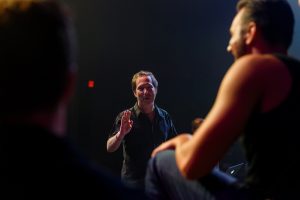
When Dr. Paul Houghtaling, director of UA’s Opera Theatre, first heard of Louisa Garland’s exploits concerning the mansion, he was fascinated, and the wheels in his operatic mind began to turn.
“It’s so theatrical to think about a woman, while her husband was off fighting with the Confederate army, saying to the Union soldiers, ‘don’t you burn down this house,’” Houghtaling says. ‘You’ve burned down the campus and destroyed everything in your path, but don’t burn this house. This is where I raised my family. This is where I raised my children.’”
“And, they listened to her. How incredible is it that this woman was able to use the right words to ask them to spare this house? Apparently she asked them to bring the furniture back in the house, and they did so. … It seems so theatrical, like ‘Gone with the Wind.’”
As a 30-year opera veteran, the story of how Louisa Garland saved the mansion became like Luciano Pavarotti performing “Nessun dorma” in Houghtaling’s ears, and he began to set in motion events that would turn that corner of UA’s history into an opera.
“Freedom and Fire! A Civil War Story” premiered earlier this semester at Bryant-Jordan Hall on UA’s campus. An encore performance was held a few days later.
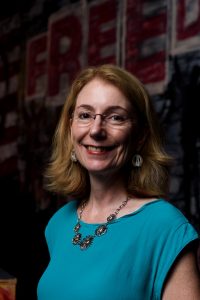
Houghtaling is the opera’s director, Dr. Robin Behn is its librettist – a script writer for an opera – and Dr. Amir Zaheri is the composer.
Houghtaling says he waited until 2016 to complete the creation of the opera and premiere it because it’s the 175th anniversary of the building of the president’s mansion.
“I’m thrilled that we are going to have the opportunity to stage our original production and highlight the University,” Behn said a few days prior to the premier. “I think it’s a chance for people who don’t always go to opera to really enjoy seeing their first opera.”
Behn, a poet and trained musician, had never written a libretto before, but says she saw it as an opportunity to combine her life-long passions for words and music. She began researching the history of the Civil War in Tuscaloosa.
“The research was exciting and ignited my imagination,” she says. “From the facts, I tried to create a sequence of dramatic scenes to tell the story. I wanted to represent a wide variety of characters who were part of this history in this time and place: Mrs. Garland, to be sure, but also the cadets, professors, university president, commanders, enslaved servants and musicians, and other townspeople.”
Behn describes how the opera moves from one dramatic scene to another. Some of the scenes are contemplative and serious, some are humorous, some are action-packed and others are reflective.
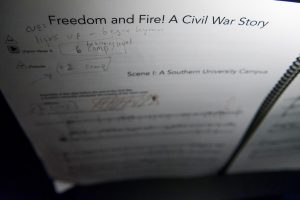
“The opera has many textures in it and has a dramatic sweep that takes it from the beginning to the end,” she says.
Zaheri is not new to operas. This was his fifth operatic composition.
“An opera is not that much different than a musical,” he says. “They both have a story, dialogue and musical conversations that happen, so they’ve quite a lot in common.
“They have characters, and the music has to move the audience through the story and keep the characters in line, as well as connect the characters to the audience. So, writing it takes a little bit more planning ahead and pre-compositional work before you even write the music – like mapping out the drama and how you understand it – as well as how you want the music to reinforce the drama.”
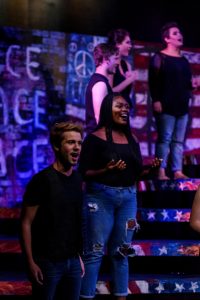
For this particular opera, Zaheri opted to score the opera for voices and live electronics instead of utilizing live instruments, which is a first for a UA opera program.
“It will all be created with digital music, which I am creating,” he says. “I think it’s important for this very old story to be told in a distinctly new way, so that people might become more fully aware of our role in the Civil War.”
The chamber opera’s climatic end was Louisa Garland’s confrontation with the Union army, but, before that, the opera took audiences through a series of scenes such as the Union army marching into Tuscaloosa, a UA librarian saving a single book from a burning campus library and a wedding that the Union troops crash and eat the food.
“It’s sort of a fun thing,” Houghtaling says. “We hear Abraham Lincoln’s voice and words. We hear Gen. John Thomas Croxton, a general in the Union army who is the one who said ‘burn everything.’ So, we’re really working with some profoundly interesting stuff.
“The characters are strong and rich. There’s also some comedy relief.”
Dr. Houghtaling is an associate professor of voice, Dr. Behn is a professor of English, and Dr. Zaheri is the director of contemporary ensemble and assistant professor of composition in the School of Music, all within UA’s College of Arts and Sciences.
